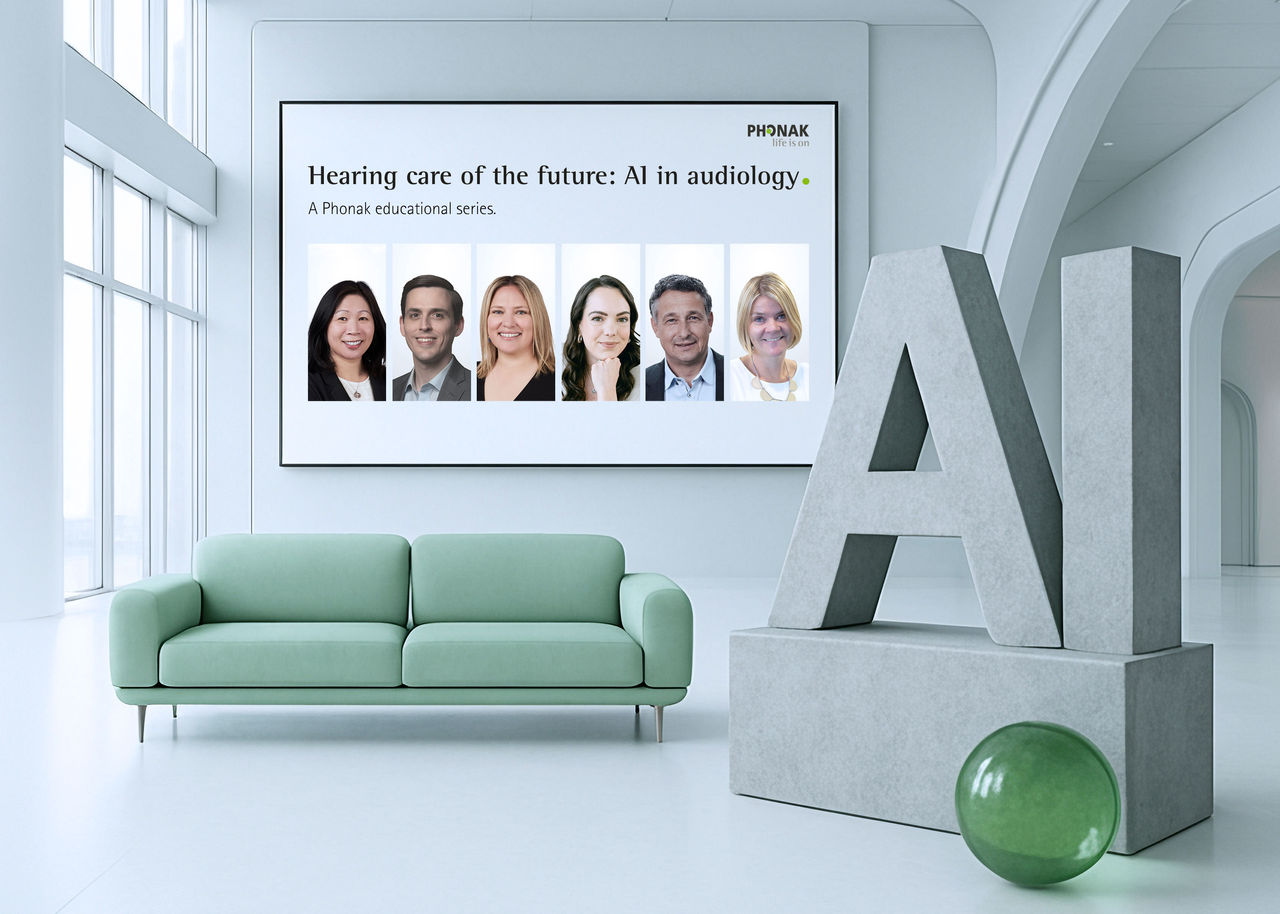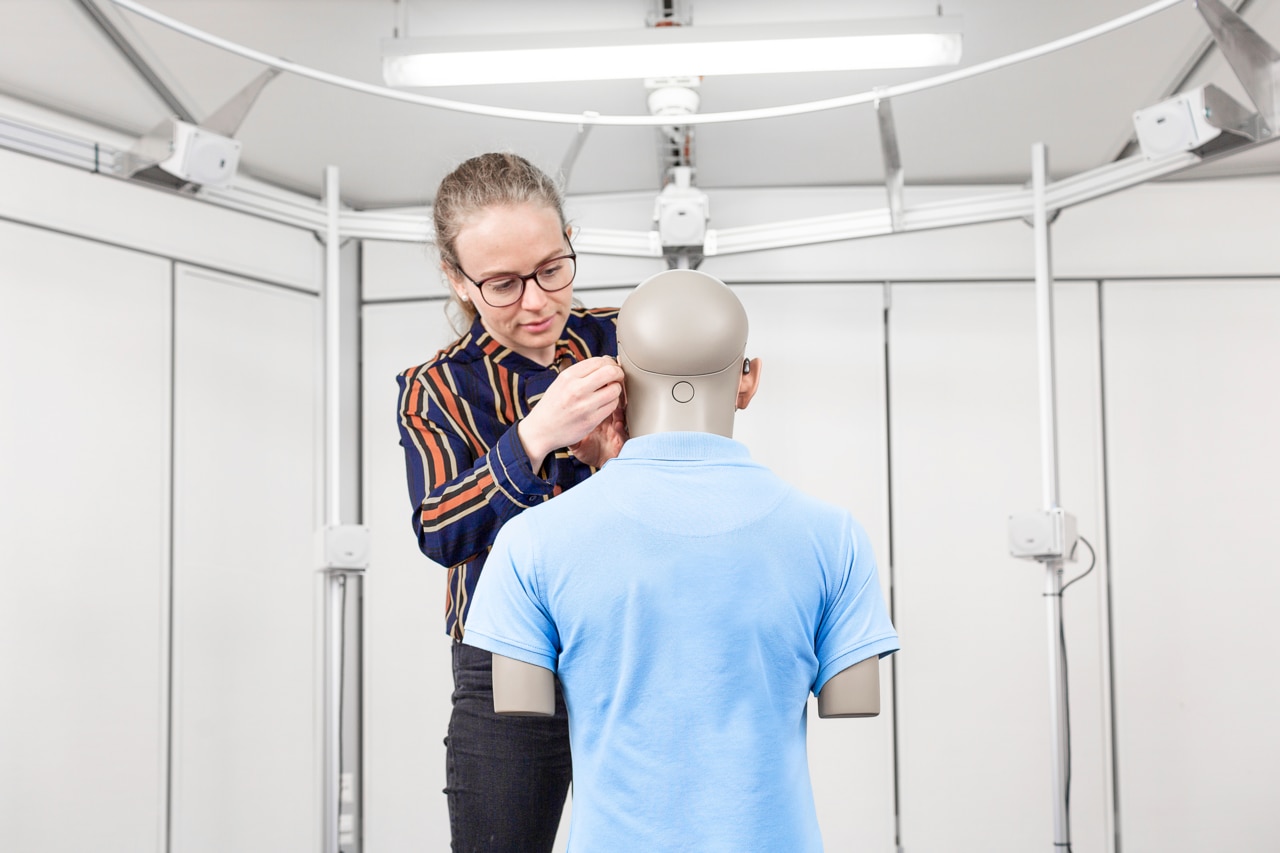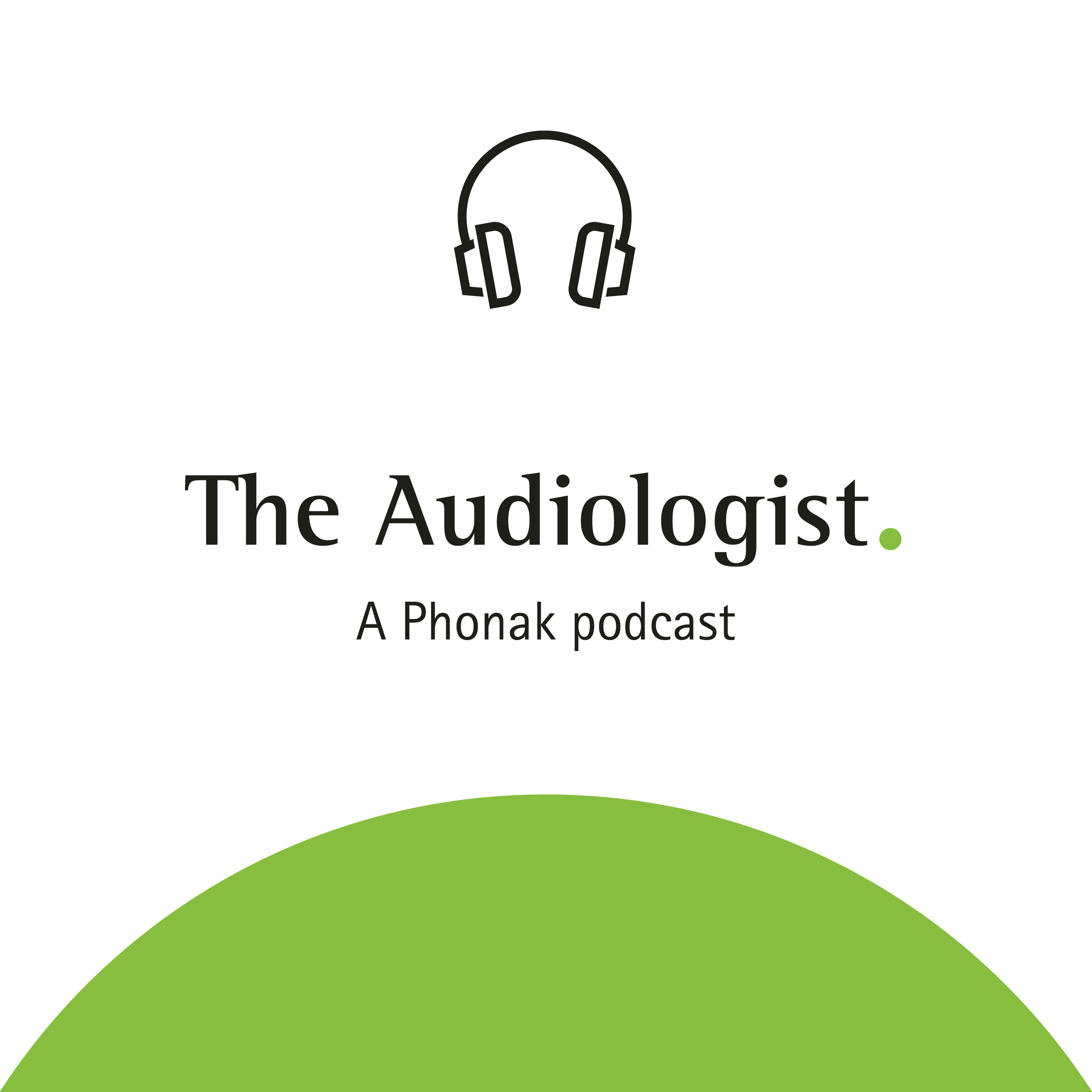How AI is used for real benefits in the real world
At Phonak, we innovate for people. Our advanced AI-powered hearing aids are designed to help people to hear better in the real world, significantly reducing listening effort, and enhancing every conversation.1
Stay ahead in a rapidly evolving field with our AI-powered solutions and educational resources that allow you to work smarter, focus on high-value client care, and achieve higher hearing aid wearer satisfaction.
Empower your practice today and shape the future of hearing healthcare
AI is fundamentally transforming the hearing journey for both professionals and clients. By enhancing diagnostics, it allows for earlier and more accurate identification of hearing loss, enabling tailored treatment plans that meet individual needs. AI also supports ongoing aftercare, ensuring clients receive continuous support long after their initial fitting.
New educational series!
Hearing care of the future:
AI in audiology.
The educational series is your gateway to the future of hearing care. It gives hearing care professionals and clinic owners an early look at emerging AI applications—not just in technology, but in business strategy, client counseling, and clinical efficiency.
A select group of global AI experts, including Phonak’s own thought leaders, share cutting-edge insights in a series of high-quality, engaging webinars—each designed to inspire, educate, and equip you for what’s ahead.

How does AI help people with hearing aids in the real world?
AI isn’t just a buzzword—it’s making a measurable difference in daily life. Phonak’s AI-powered hearing aid features are engineered to improve how clients hear and function throughout their day.
Built on the Infinio platform, Phonak technology includes AI-driven features like AutoSense OS™ and Spheric Speech Clarity, providing excellent speech understanding from any direction and in a wide range of real-life listening situations. This gives you a flexible solution for diverse client needs.
How does an AI feature like AutoSense™ help clients in the real world?
This is what the data shows:
16 %
better speech understanding1
Clients can follow conversations more clearly—even in noise or group settings.
45 %
reduced listening effort2
Less mental strain means more energy for social connection and participation.
21 %
less listening fatigue by day’s end3
Clients stay engaged longer without the drain of constant audio processing.
Infinio Platform with AutoSense OS: AI-powered precision – seamless adaptation
Your clients don’t live in one environment—so their hearing aids shouldn’t either.
Powered by the Infinio platform, Phonak’s AutoSense OS 7.0 is an AI-trained automatic operating system that continuously analyzes the sound environment—more than 700 times per second—to ensure the hearing aid adapts in real time to what the client needs to hear.
ASOS 7.0 has been trained on 18 times more sound environments than the previous generation, making it the most precise implementation of AutoSense to date—with a 24% increase in classification accuracy, according to technical measures.7
For clients, this means:
Seamless listening transitions from one environment to another
Less need for manual adjustments
Reduced listening effort and improved comfort throughout the day2
For hearing care professionals, this means:
Confidence in consistent performance across real-world situations
Fewer fine-tuning appointments thanks to automatic personalization4
A solution that fits diverse clients lifestyles with minimal intervention
In simple terms, AutoSense OS makes it easier to deliver exceptional outcomes—no matter where life takes your clients.
Spheric Speech Clarity: Advanced speech understanding in noise
Speech in background noise is one of the most difficult challenges for hearing aid users—and a key factor in overall satisfaction.
Phonak’s Spheric Speech Clarity uses deep neural network (DNN)-based denoising to extract, enhance, and integrate speech from any direction. This allows clients to hear what matters most, even in complex acoustic environments.
Spheric Speech Clarity offers proven benefits for your clients:
Clients can engage with friends, family members or colleagues even in the noisiest environments. As there is instant speech separation from noise all around – with an unprecedented 10.2 dB SNR improvement.*5
Clients experience a level of clean and clear speech that surpasses any current technology - truly delivering on “Life is on." Spheric Speech Clarity 2.0 boosts speech understanding by 50%.*8
Clients are able to participate in a lively family dinner, follow an engaging lecture or simply enjoy a heart-to-heart conversation with a friend in a noisy environment. That's the power of exceptional speech clarity. They are 2 to 3x more likely to understand every word, from any direction, compared to two leading competitors.6***
Discover the science behind Infinio: Real-world results, backed by evidence
The Infinio platform isn’t just built on innovation—it’s proven by research. From controlled lab settings to real-life environments, Phonak continues to validate the performance of its AI-powered hearing technology, ensuring real-world benefits for clients.

Field study – Huang, HY. et al., 2025
This study investigated the effect of a Deep Neural Network (DNN) signal processing noise reduction feature, Spheric Speech Clarity, on cognitive function. The feature, introduced with the Phonak Infinio platform, showed significant effects on interference control and working memory capacity while listening in noise.

Field study – Miller, A. et al., October 2024
This study highlights spontaneous user preference for Phonak Audéo Sphere™ Infinio in daily listening conditions—underscoring its value in real-world patient satisfaction.

Field study – Raufer, S. et al., 2024
Speech understanding in noise is one of the biggest challenges for hearing aid users. This study confirms that Spheric Speech Clarity delivers measurable improvements in speech clarity compared to leading alternatives.
Blog posts

Spheric Speech Clarity: Findings from PARC field trial
Results of a study conducted in a busy café show real-world benefits of Spheric Speech Clarity, a denoising system in Audéo Sphere™ Infinio. The findings highlight its advantages in improving speech clarity and reducing interference from background noise in real-world environments.

New hearing aid users prefer first-fit settings in Phonak Infinio
A recent study conducted at the Phonak Audiology Research Center demonstrates that first-time hearing aid users show higher spontaneous acceptance of first-fit settings in Phonak Infinio devices compared to another brand’s device.

How AI is ensuring your clients have uninterrupted care
Learn how Phonak is using AI-driven insights and proactive monitoring to reduce disruptions, enhance reliability, and improve outcomes for you and your clients.

Audéo Sphere™: Advancing speech understanding with AI
Phonak introduces the world’s first hearing aid with a dedicated artificial intelligence (AI) chip that addresses the number one client need – speech understanding in noise.

AutoSense OS powered by AI
How does AutoSense OS use AI and machine learning to enhance our hearing aids, bringing us closer to replicating the natural hearing process? Nicole Klutz, AuD., explains how it works.
Podcasts
References
*At 0 degrees with maximum feature strength compared to omni.
** Spheric Speech Clarity, compared to two leading competitor technologies, for adults with moderate to moderately-severe hearing losses.
***For moderate to moderately-severe hearing losses.
1. Woodward, J. and Latzel, M. (2022). New implementation of directional beamforming configurations show improved speech understanding and reduced listening effort. Phonak Field Study News retrieved from www.phonak.com/evidence.
2. Appleton-Huber, J et al "Speech Enhancer reduces listening effort of speech from adjacent room." Phonak Field Study News retrieved from www.phonak.com/evidence.
3. Latzel, M, Heeren, J and Lesimple, C.(2024) "Speech Enhancer reduces listening effort and fatigue." phonak Field Study News retrieved from www.phonak.com/evidence
4. Preuss, M., Bulut, K. (2025) Clinical trends for mild to moderate hearing losses. Phonak Target Track retrieved from www.phonak.com/evidence
5. Raufer, S., Kohlhauer, P., Jehle, F., Kühnel, V., Preuss, M., Hobi, S. (2024). Spheric Speech Clarity proven to outperform three key competitors for clear speech in noise. Phonak Field Study News retrieved from https://www.phonak.com/evidence
6. Wright, A., Kuehnel, V., Keller, M., Seitz-Paquette, K., Latzel, M. (2024). “Spheric Speech Clarity applies DNN signal processing to significantly improve speech understanding from any direction and reduce the listening effort.“ Phonak Field Study News retrieved from https://www.phonak.com/evidence
7. Wright, A. et al. (2025). AutoSense OS 7.0 improves speech understanding with highly rated sound quality for challenging listening environments. Phonak Field Study News. Retrieved from https://www.phonak.com/evidence.
8. Latzel, M et al. (2025) Spheric Speech Clarity improves speech understanding and reduces both listening effort and fatigue. Phonak Field Study News. Retrieved from https://www.phonak.com/evidence

